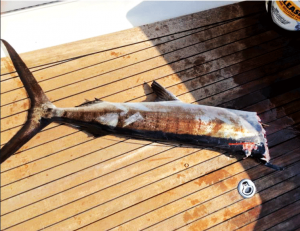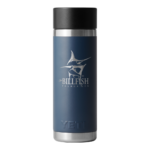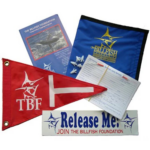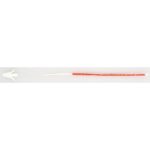
Charter and private recreational fishing captains primarily are conscientious in practicing conservation-smart measures for their business depends on the availability of fish. Most billfishing captains practice catch and release, some also tag and many use non-offset circle hooks. But best practices make no differenc
e when sharks attack and kill thousands of hooked fish, including sailfish, blue marlin, white marlin, bottom fish and coastal pelagics. Commercial fishing captains are experiencing much the same.
Due to overfishing, two decades ago the National Marine Fisheries Service (NMFS) and coastal states began restricting Atlantic shark harvest, prohibiting the landing of at least 20 species. Now with increased abundance, feeding habitats are being modified by focusing on hooked fish. Captains report sharks seem to key off noises emitted from boats’ transducers, engine noise changes when gears shift into neutral for an angler to fight a fish and from sounds of thrashing hooked fish, all adding to the sound of a dinner bell.
The renowned South Florida charter and private boat catch and release sailfish fishery hooks thousands of sailfish each season, without a high mortality rate based on observations from a large number of boats fishing the same areas at the same time. But with sharks killing large numbers of hooked sailfish, the decline in their abundance may be accelerating with the decline of the fishery.
Top Captains Speak Out
One well-known and respected South Florida charter boat captain, Bouncer Smith, shared that in deciding to retire in July 2020, he considered the bleak looking future for sailfish charters in South Florida caused by sharks. Private boat captain Doug Covin of Jupiter, Florida, echoes Smith’s concerns. Covin added that financial investments in private boats usually is higher than charter boats, enlarging the negative economic impact if they leave the fishery. Covin learned from 4,000 social media responses to his query if others were experiencing shark attacks on hooked fish that thousands are frustrated.

One captain fishing off the east coast reported 10 yellowfin tunas killed in one trip by sharks before landing the authorized limit for one client. The federal yellowfin bag limit is 3 fish per person, per day trip. So if a boat carries 4 anglers and each loses 10 yellowfin to sharks, that totals 40 dead yellowfin tunas plus retained bag limit. If the 4 anglers land their 3 fish bag limit each, that means 12 additional yellowfin tunas would be killed totaling 52 killed yellowfin by one boat on 1 trip. If 30 boats fish for yellowfin that same day, the total number yellowfin tuna that could be killed by sharks and legal bag limit retention could reach 1,560 on 1 day.
Out of North Carolina, TBF Board Member and charter captain Charles “Fin” Gaddy, fishing out of Oregon Inlet, North Carolina, with 30 other boats, says, “the situation is horrific with probably over 100 hooked fish killed a day by sharks. Hooked fish get taken within a minute after being hooked.” Charter Captain Rom Whitaker, owner of the famous and historic Release fishing out of Hatteras, North Carolina and who served on NMFS Advisory Committee for Highly Migratory Species, says, “he witnessed the increase in shark abundance and attacks growing over the past 10 years and repeatedly told NMFS staff members that a problem was growing, but no action resulted.”
In the Mid-Atlantic, Captain Rich Barrett on Shark Byte, with a highly competitive team recently fishing The MidAtlantic Tournament, had a shark attack an estimated 800-pound hooked blue marlin, which might have won the event, but was disqualified because of the mutilation.
Captain Patrick Ivie, well-known for his successful billfishing out of Orange Beach, Alabama says “sharks are super bad in the Gulf, including for the bottom fishing boats as well.” Another shark killing of a likely tournament winning blue marlin, estimated to weigh 600 pounds, occurred in a Memorial Day tournament in the Gulf, which also had to be disqualified because of mutilation.
Not until reviewing dealer reports on June 11, 2020, did NMFS staff realize that 83% of the annual allocation of large coastal sharks and 64% of the hammerheads commercial fishing allocation had NOT been landed. They finally implemented an increase in commercial landing limit from 36 to 55 large coastal and hammerhead sharks per boat for the balance of this year. Species included Blacktip, Bull, Lemon, Nurse, Silky, Tiger, Spinner, Great/Smooth and Scalloped Hammerheads.
No one fishing today can afford to lose sight of the fact that in 2014 two environmental organizations filed Endangered Species Act (ESA) petitions to list dusky sharks as threatened or endangered in 2014. Fortunately, the petitions were unsuccessful. A listing could mean no fishing by any gear in waters where a dusky shark might be hooked.
A management solution to rebalance the situation is crucial before sailfish stocks and the dependent businesses collapse or before some start killing attacking sharks. Other fisheries, recreational and commercial, remain at risk as well.






